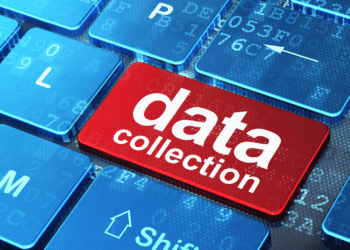In today’s hyper-competitive landscape, winning consumer attention isn’t just about flashy ads or catchy slogans. It’s about understanding the human brain—and influencing decisions before they are even made. That’s where neuromarketing comes in, a field that merges neuroscience with marketing to understand how people really respond to branding, content, and experiences.
Globally, neuromarketing is already being used by giants like Google, Coca-Cola, and Unilever. But for African businesses, the opportunity is just beginning to unfold. As mobile penetration, social media usage, and digital spending rise, neuromarketing offers a unique way to deepen consumer connection, optimize campaigns, and drive results.
What is Neuromarketing?
Neuromarketing uses scientific techniques—such as EEG (electroencephalogram), fMRI (functional magnetic resonance imaging), eye-tracking, and facial coding—to measure consumers’ subconscious reactions to stimuli. These tools help marketers go beyond what consumers say and uncover what they truly feel.
Unlike surveys or focus groups, neuromarketing doesn’t rely on verbal feedback. It taps into brain activity and physiological responses to detect emotion, attention, memory, and decision-making patterns. In essence, it tells marketers what the brain is thinking before the consumer does.
Global Success Stories: Neuromarketing in Action
- Coca-Cola vs. Pepsi: In an iconic study using fMRI, researchers found that while the brain’s reward center responded similarly to both drinks in blind tests, branding triggered a stronger emotional response for Coca-Cola—proving the power of brand association on neural levels.
- Frito-Lay: Using EEG, Frito-Lay discovered that shiny packaging triggered guilt-related responses in consumers, while matte bags didn’t. A simple packaging redesign boosted sales.
- Nielsen Consumer Neuroscience: Nielsen’s research shows that ads with high emotional engagement deliver a 23% lift in sales on average, compared to low-performing content.
The African Opportunity
Africa’s consumer landscape is evolving rapidly:
- Over 650 million mobile users in sub-Saharan Africa.
- More than 300 million social media users across the continent.
- Youthful population: 60% under age 25, highly responsive to emotional and visual content.
These numbers reveal a key truth: African consumers are deeply connected—digitally and emotionally. But marketers often lack the tools to decode their subconscious preferences. Neuromarketing offers a data-driven pathway to bridge this gap.
How African Brands Can Use Neuromarketing
While full-scale neuromarketing labs may seem out of reach, African businesses can begin with scalable and accessible applications:
- Eye-tracking for mobile ads and websites to identify attention hotspots.
- Facial coding to test emotional reactions to video content and social campaigns
- EEG headsets to measure engagement in product testing, particularly for high-investment sectors like banking or telecom.
Imagine a Nigerian bank testing the emotional impact of a mobile banking app ad using EEG. Or a Kenyan telco using eye-tracking to optimize their website interface for better user engagement. Or a South African FMCG brand applying facial coding to measure emotional responses to a new product video.
While few African brands have formally adopted neuromarketing yet, the potential is enormous, especially when integrated with existing marketing analytics.
Data-Driven Insights
- digital ads that elicit strong emotions are four times more likely to generate impact than those with weaker emotional connections (they are also 2.6 times more likely to go viral and 4 times more powerful in driving long-term brand equity).
- In Nigeria, ad spending in the social media advertising market is expected to reach $148.19 million in 2025, with 71% of this spend projected to come from mobile by 2029. Despite this growth, many brands still rely on outdated methods for testing campaign effectiveness—missing key opportunities to connect with Nigeria’s expanding and digitally savvy youth population.
By combining neuroscience insights with digital analytics, African businesses can create content that resonates, converts, and builds loyalty.
Challenges and Ethical Considerations
Despite its power, neuromarketing isn’t without challenges:
- High costs of tools like fMRI can limit access for SMEs.
- Data privacy and ethics must be considered—especially when tracking subconscious data.
- The line between influence and manipulation must be carefully maintained.
African businesses need context-sensitive and ethical applications that balance innovation with responsibility.
Getting Started: Practical Steps
You don’t need a neuroscience lab to benefit from neuromarketing. Here’s how African brands can begin:
- Use low-cost tools like eye-tracking apps or emotion AI software.
- A/B test emotional cues (colour, music, faces) in your digital campaigns.
- Partner with universities or marketing research firms exploring consumer neuroscience.
- Design UX with brain-friendly principles—simplicity, contrast, storytelling.
Even simple adjustments based on cognitive science can improve campaign performance dramatically.
The Brain is the Battleground
Neuromarketing is no longer a futuristic idea, it’s a competitive edge. In a market as dynamic and emotionally charged as Africa, brands that understand the subconscious mind will build stronger connections and win lasting loyalty.
At Marketing Analytics Africa, we believe the future of marketing lies at the intersection of data, emotion, and insight. Let’s help you decode the brain—and influence decisions the smart way.




